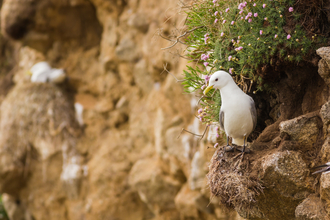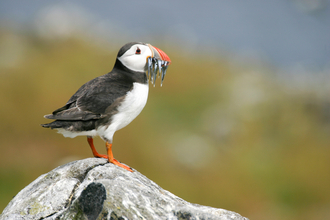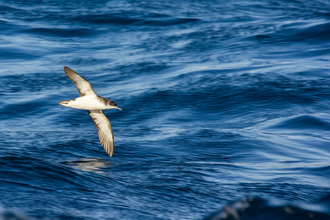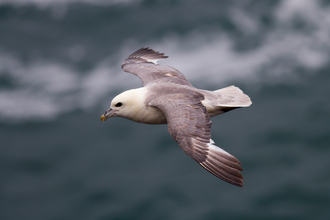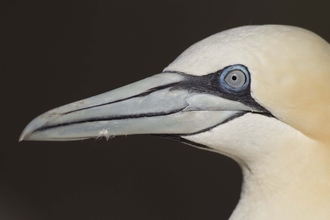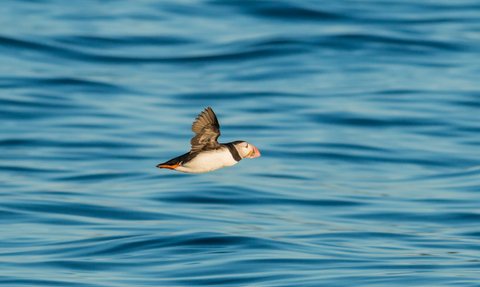
Puffin
Clowns of the sea
The puffin is a small, stocky seabird with black and white plumage and colourful bill. Like a piece of charcoal in the gloom, their black feathers camouflage against the dark Atlantic waters, whilst their pale underbelly hides them from predators against the radiance of the sky. Their scientific part of their name fratercula, meaning friar, is a reference to their markings which appear like the robes of a monk. Artica refers to their northerly distribution.
Puffins are most famously known for their iconic appearance, giving them nicknames including the 'clowns of the sea' or 'sea parrots'. Their bright colours are only needed during the breeding season to attract mates; they shed their flamboyant bills during the cold winter months, losing their distinctive colour and becoming dull, allowing for even greater camouflage.
Puffins nest in Hobbit-like holes in the ground, often recycled rabbit burrows, and are monogamous, returning to mate with the same individual every year. Females lay a single, cream-coloured egg in nests built from a combination of seaweed, feathers, and grass. Both parents will take turns to incubate the egg once it is safely inside the nest, which usually takes around 40 days to hatch.
Young chicks are called ‘pufflings’ and need to be fed several times a day. The pair will bring back small fish such as sand eels, herring, capelin and hake. Puffins catch these fish by diving down as deep as 60 metres, flapping their wings to ‘fly’ under the water, using their feet to steer as they chase their prey. Puffins have a distinct manner of holding several fish at once in their beaks. This is achieved with their muscular, grooved tongues which can securely hold fish in place whilst they hunt for more.
Before pufflings can fly, they will launch themselves off the rocks and swim out to open sea. For a small bird they exhibit a complex array of social behaviours and have even been known to use tools on occasion. On land, pairs can be seen performing a behaviour known as billing, where they rub their beaks together as an affectionate form of greeting. Signs of aggression often begin with a puffin gaping, puffing up their body to look bigger, opening their wings and beak, sometimes stopping their feet to further show their displeasure. If aggression escalates into a fight, puffins will lock beaks and attempt to push each other off the cliff. Fights can lure crowds of spectators of often ten or more puffins.
The puffin has a direct fast flight reaching speeds of up to 55mph. Its short stubby wings beat at 400 beats/minute.
Find out more
The Isles of Scilly are famed for their amazing marine life. Find out more about puffins nationally and other seabirds you can find on Scilly...

